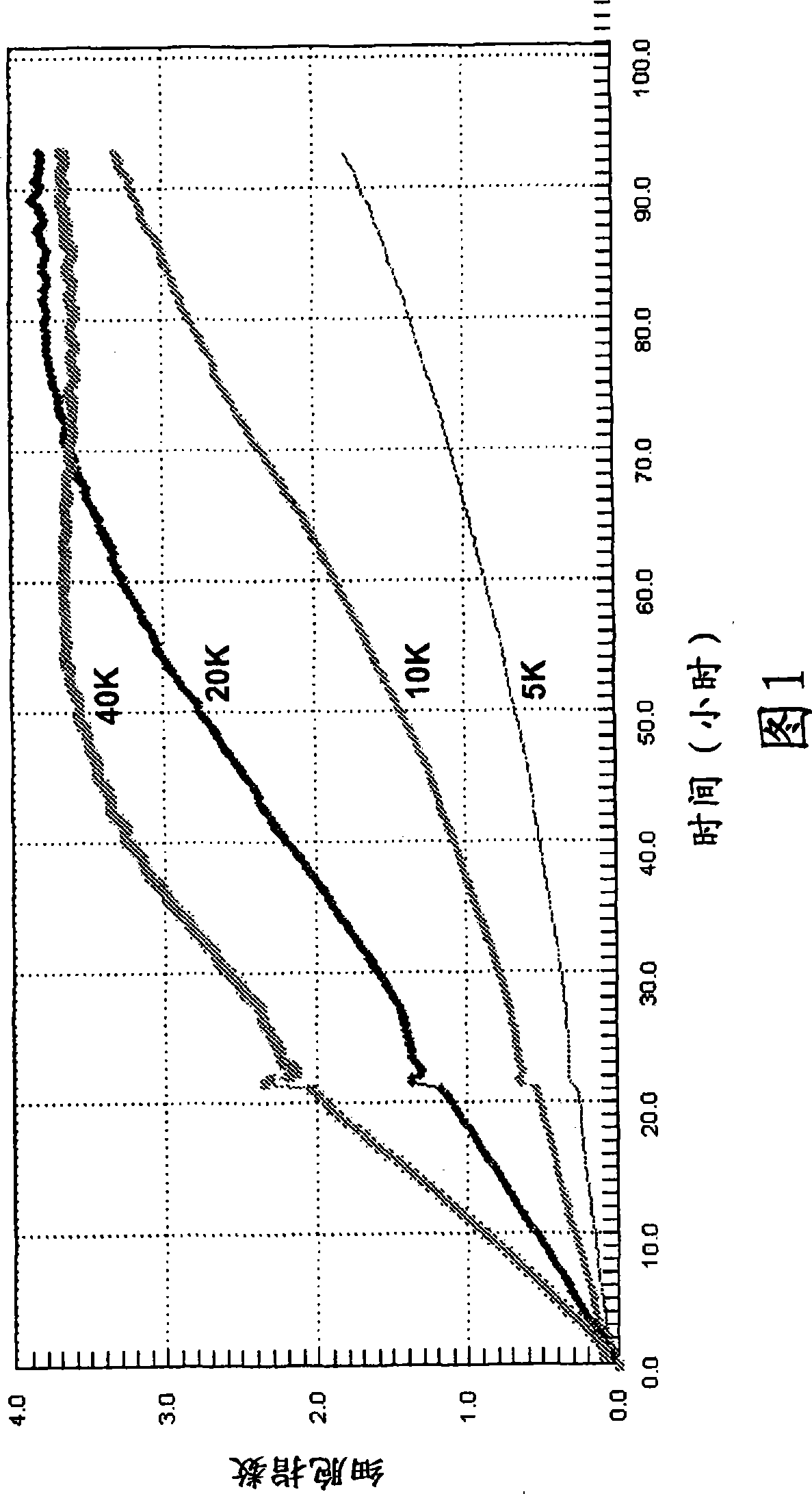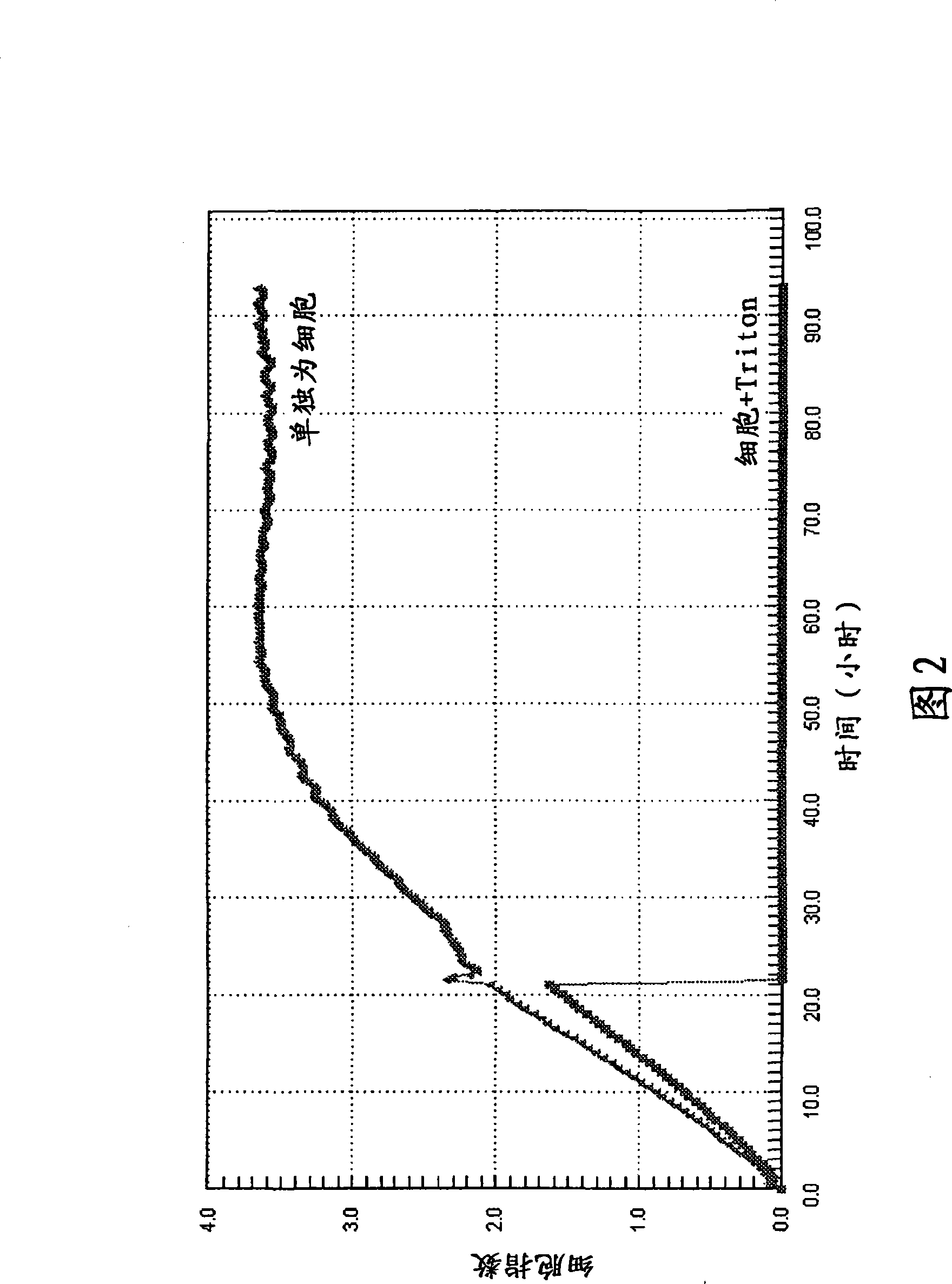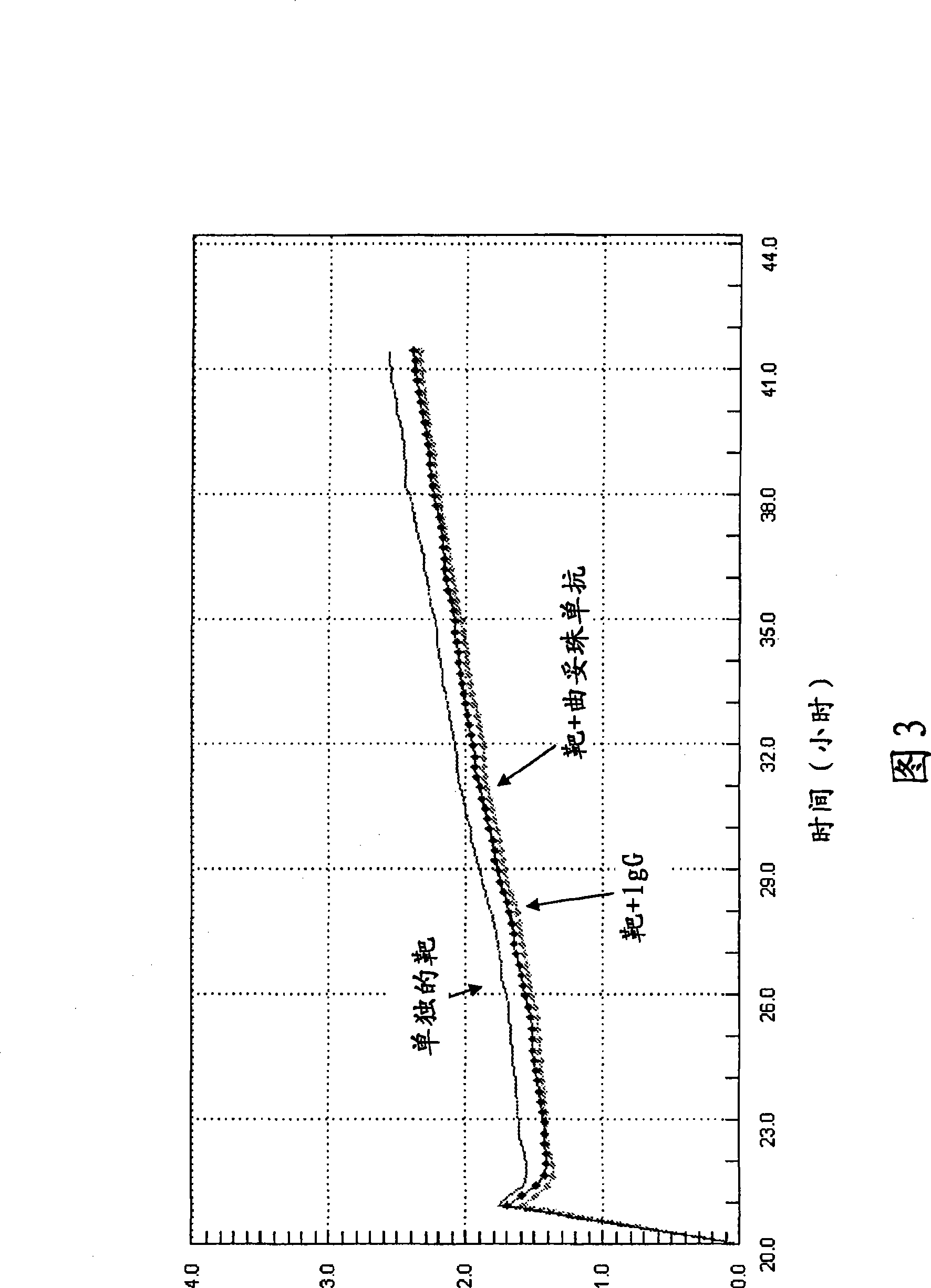Antibody-dependent cellular cytotoxicity assay
A technology of cytotoxicity and dependence, applied in the direction of measuring devices, biological tests, material inspection products, etc., can solve the problems of inability to distinguish target cells from effector cell death, etc., achieve high-throughput screening of ADCC activity optimization, and easy operation , the effect of high sensitivity
- Summary
- Abstract
- Description
- Claims
- Application Information
AI Technical Summary
Problems solved by technology
Method used
Image
Examples
Embodiment
[0102] 1. Foreword by ACEA Biosciences (San Diego, CA) The (Real-Time Cell Electronic Sensor) system uses an electronic readout of impedance to non-invasively quantify cell status in real-time. Cells were seeded in E-Plate microplates (ACEA Biosciences) and integrated with microelectrode sensor arrays. The interaction of cells and microelectrode surfaces results in the generation of cell-electrode impedance responses, which indicate the state of cells in terms of morphology, adhesion quality, and quantity.
[0103] ACEA was used to develop a real-time ADCC assay for adherent cells. Two cell lines were used: SKBR3 (a breast cancer cell line); and MG63 (an osteoblast cell line). SKBR3 is an adherent cell line that overexpresses the HER-2 antigen. is a humanized IgG1 antibody against HER-2 that mediates killing of SKBR3 cells via ADCC in the presence of effector cells. MG63 is an adherent cell line that overexpresses M-SCF. Chir-RX1, a humanized antibody against M-CSF, med...
PUM
 Login to View More
Login to View More Abstract
Description
Claims
Application Information
 Login to View More
Login to View More - R&D
- Intellectual Property
- Life Sciences
- Materials
- Tech Scout
- Unparalleled Data Quality
- Higher Quality Content
- 60% Fewer Hallucinations
Browse by: Latest US Patents, China's latest patents, Technical Efficacy Thesaurus, Application Domain, Technology Topic, Popular Technical Reports.
© 2025 PatSnap. All rights reserved.Legal|Privacy policy|Modern Slavery Act Transparency Statement|Sitemap|About US| Contact US: help@patsnap.com



